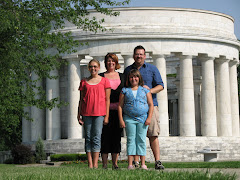Notes from the 2009 Seneca County Maple Festival:
Snavely's Sugar Shack stands in the same maple woods the Snavely family has tapped for seven generations. The original sugar camp was built in 1864 by Paul Snavely's great-great grandfather, Henry Bowerman, and stood until it was replaced in 1982. Today, the sugar shack is located on the site of the original camp on the north side of this twenty-acre woods. Storms the night before, and the day of, the 2009 Seneca County Maple Fest brought more than two inches of rain. This is the "festival shuttle" taking people back to the woods. The water was between 12 and 18 inches deep on the crushed-stone road back to the camp. In years past, we enjoyed the walk to the woods; this year, no one walked or swam.
Storms the night before, and the day of, the 2009 Seneca County Maple Fest brought more than two inches of rain. This is the "festival shuttle" taking people back to the woods. The water was between 12 and 18 inches deep on the crushed-stone road back to the camp. In years past, we enjoyed the walk to the woods; this year, no one walked or swam.  Once there, festival patrons have the option of touring the camp and the woods, or heading straight to a hot breakfast of pancakes, locally-made sausage, vanilla ice cream, and all the fresh Snavely maple syrup you care to use.
Once there, festival patrons have the option of touring the camp and the woods, or heading straight to a hot breakfast of pancakes, locally-made sausage, vanilla ice cream, and all the fresh Snavely maple syrup you care to use. We headed directly to Jenny Greer's mobile catering booth. Greer and her family have been participating in the festival since it started in 1992.
We headed directly to Jenny Greer's mobile catering booth. Greer and her family have been participating in the festival since it started in 1992. Breakfast:
Breakfast: How often does breakfast come with an ice cream course? Not often enough! Especially when it's from Toft's and there's hot, fresh, pure maple syrup--straight from the evaporator--to pour on it.
How often does breakfast come with an ice cream course? Not often enough! Especially when it's from Toft's and there's hot, fresh, pure maple syrup--straight from the evaporator--to pour on it. Approximately 300 galvanized metal buckets hang from metal spiles (taps) inserted about waist high into the mature maple trees in Snavely’s twenty-acre woods, with an additional 1000 taps, all on buckets, in eight surrounding woods within two miles of their maple camp. Usually, this "creek" is dry:
Approximately 300 galvanized metal buckets hang from metal spiles (taps) inserted about waist high into the mature maple trees in Snavely’s twenty-acre woods, with an additional 1000 taps, all on buckets, in eight surrounding woods within two miles of their maple camp. Usually, this "creek" is dry: I love my EB Tek gortex jacket, but I still needed my La Crosse rubber barn boots, Wellingtons for the Brits, and an umbrella to get these shots. Holding an umbrella while taking photos is not the easiest thing to do, but the rain really brightened the colors:
I love my EB Tek gortex jacket, but I still needed my La Crosse rubber barn boots, Wellingtons for the Brits, and an umbrella to get these shots. Holding an umbrella while taking photos is not the easiest thing to do, but the rain really brightened the colors: This is a collection of vintage spiles hanging on the inside wall of the sugar shack:
This is a collection of vintage spiles hanging on the inside wall of the sugar shack: When the sap buckets are nearly full, they are emptied into 150-gallon gathering tanks pulled behind four-wheelers.
When the sap buckets are nearly full, they are emptied into 150-gallon gathering tanks pulled behind four-wheelers. The sap is then poured into one of the four 300 gallon stainless steel tanks outside the the sugar shack, and leaves are filtered out. 180 gallons of maple sap is siphoned from a tank, to the evaporating equipment inside the shack.
The sap is then poured into one of the four 300 gallon stainless steel tanks outside the the sugar shack, and leaves are filtered out. 180 gallons of maple sap is siphoned from a tank, to the evaporating equipment inside the shack.
Snavely's upgraded from a wood-fired evaporator to an oil-fired evaporator for the 2002 season. At the same time they completely refurbished the attached woodshed and converted it into a kitchen with a wood-burning stove for heat. Sugar maple sap only contains about 2 to 2.5 percent sugar, it takes 2.5 to 3 gallons of heating oil to reduce about 40 to 45 gallons of maple sap to make one gallon of maple syrup. Evelyn Snavely, in the cream-colored sweatshirt, explains the process to festival patrons:
 The 180 gallons of sap is moved through 150 feet of heated copper tubing, cooking the raw sap down. The cooked sap is pumped into the evaporating section and is cooked until it reaches a temperature of 217.4 degrees Fahrenheit. Paul Snavely explaining that the temperature determining the final product varies depending on the barometric pressure.
The 180 gallons of sap is moved through 150 feet of heated copper tubing, cooking the raw sap down. The cooked sap is pumped into the evaporating section and is cooked until it reaches a temperature of 217.4 degrees Fahrenheit. Paul Snavely explaining that the temperature determining the final product varies depending on the barometric pressure.  Once the correct temperature is reached, an alarm sounds and a red light turns on, indicating the syrup is ready to be dispensed. An automatic valve opens and allows the syrup to drain into a bucket at which time it is double-checked with a hydrometer to make sure the syrup has reached it desired temperature and density. If the syrup does not reach 32 on the hydrometer then the unfinished syrup is poured back into the evaporator and reprocessed until it meets all requirements for bottling. Paul Snavely with Emily and Jessica:
Once the correct temperature is reached, an alarm sounds and a red light turns on, indicating the syrup is ready to be dispensed. An automatic valve opens and allows the syrup to drain into a bucket at which time it is double-checked with a hydrometer to make sure the syrup has reached it desired temperature and density. If the syrup does not reach 32 on the hydrometer then the unfinished syrup is poured back into the evaporator and reprocessed until it meets all requirements for bottling. Paul Snavely with Emily and Jessica:  When the syrup has reached the appropriate temperature and meets the other required measurements, it is then poured into the bottling container, but not before the syrup is poured through a fine cloth that separates the sugar sand and the syrup.
When the syrup has reached the appropriate temperature and meets the other required measurements, it is then poured into the bottling container, but not before the syrup is poured through a fine cloth that separates the sugar sand and the syrup.  After the sugar sand and syrup are separated the syrup is ready to be bottled into gallons, half-gallons, quarts, pints, half-pints and 3.5oz bottles. The syrup has to be at 180 degrees Fahrenheit, in order for the bottles to seal properly. The original 180 gallons of sap, when boiled and evaporated down, will make 3 ½ gallons of Ohio Maple Syrup.
After the sugar sand and syrup are separated the syrup is ready to be bottled into gallons, half-gallons, quarts, pints, half-pints and 3.5oz bottles. The syrup has to be at 180 degrees Fahrenheit, in order for the bottles to seal properly. The original 180 gallons of sap, when boiled and evaporated down, will make 3 ½ gallons of Ohio Maple Syrup. NC
NC


2 comments:
Wow, I was just talking about maple tapping today. That looks like a great trip.
Great Post, well done from all aspects.
Post a Comment